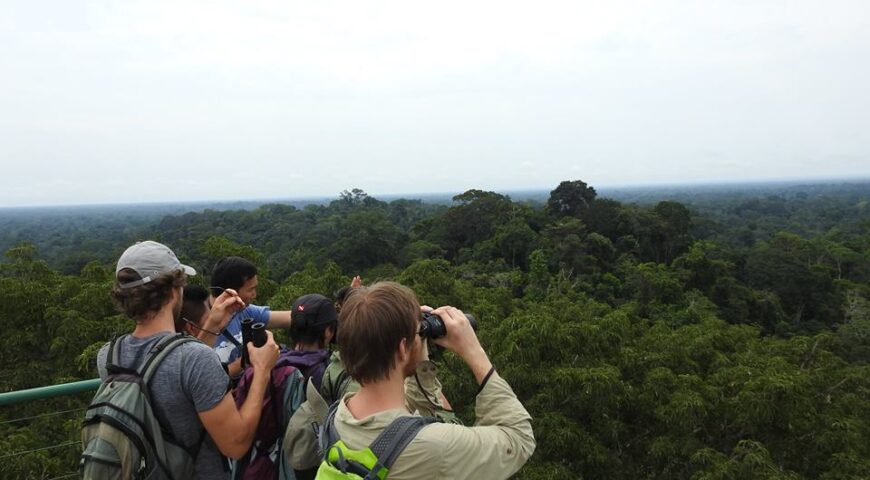
Ecuador Amazon Rainforest
The Ecuadorian Amazon Rainforest is a diverse and ecologically rich region that covers the eastern part of the country. It is part of the greater Amazon Rainforest, which spans nine countries in South America.
This region is known for its incredible biodiversity and unique ecosystems, making it a critically important area for conservation.
The Amazon Rainforest in Ecuador is home to a vast array of plant and animal species, including over 300 species of mammals, 1,500 species of birds, and over 2,500 species of fish. Some of the most iconic animals found in this region include jaguars, giant otters, and pink river dolphins. In addition, the forest is home to thousands of plant species, many of which are used for medicinal purposes.
The Amazon Rainforest in Ecuador is also home to numerous indigenous communities who have lived in harmony with the forest for thousands of years. These communities have a deep knowledge of the forest and its resources and have developed sustainable ways of living off the land.
Unfortunately, the rainforest is threatened by deforestation and development, which not only puts the region’s biodiversity at risk but also endangers the livelihoods of indigenous communities.
Efforts are being made to protect the Ecuadorian Amazon Rainforest, including the creation of national parks and reserves, sustainable forestry practices, and the promotion of ecotourism. However, more needs to be done to protect this vital region and ensure its long-term sustainability.
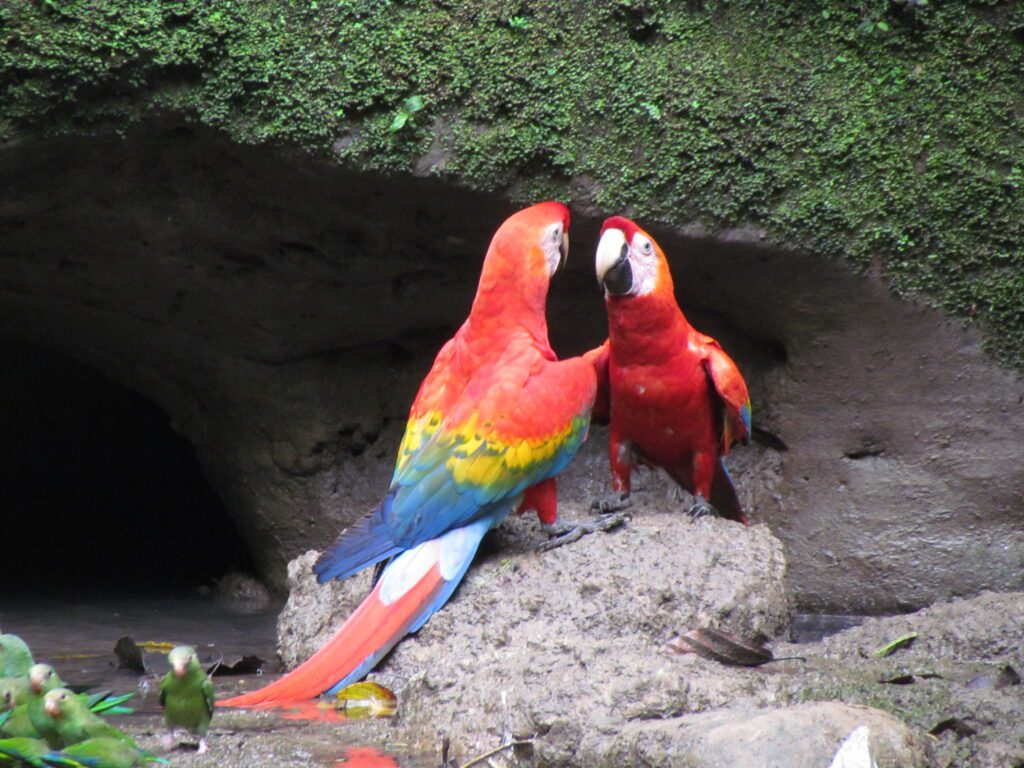
Why Tourism can help the conservation of the Ecuadorian Rain Forest?
Tourism can play a crucial role in the conservation of the Ecuadorian Rainforest by creating economic incentives for conservation and supporting sustainable practices. Here are a few ways in which tourism can help:
- By attracting visitors to the rainforest, tourism creates jobs and income opportunities for local communities. This provides an economic incentive for communities to conserve the rainforest rather than exploit it for short-term gain.
- Tourism can help raise awareness about the importance of the rainforest and the need to conserve it. Tourists can learn about the unique ecosystems, wildlife, and cultures of the region and develop a deeper appreciation for the value of conservation.
- Tour operators and accommodations can adopt sustainable practices that minimize their impact on the environment and support conservation efforts. This can include using renewable energy, reducing waste, and supporting local conservation initiatives.
- Tourism revenue can also be used to fund conservation projects such as reforestation, wildlife monitoring, and habitat restoration. This helps ensure the long-term sustainability of the rainforest and its ecosystems.
Ecuador Eco Adventure organizes trips to various destinations in the Ecuadorian Amazon, which we believe is important for travelers to visit and learn from the richness of these ecosystems, here are a few destinations we offer to tourists, that want to visit Ecuador.
Visiting Yasuni National Park is important for several reasons. Firstly, it allows travelers to experience the incredible biodiversity of the Amazon rainforest and to learn about the indigenous communities that call this region home. This can help to foster a greater appreciation for the importance of protecting these fragile ecosystems and the biodiversity they support.
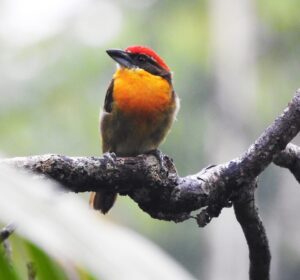
Additionally, tourism can play a role in supporting conservation efforts in Yasuni. By visiting the park, travelers are contributing to the local economy and helping to create jobs for local people. This can provide an alternative source of income to activities like logging and oil extraction, which can be harmful to the environment.
Furthermore, responsible tourism practices can help to ensure that the environmental impact of visitors is minimized. This can be achieved through measures like using eco-friendly accommodations, following designated trails, and respecting the natural environment.
Overall, visiting Yasuni National Park can be an important way to learn about the Amazon rainforest and to support efforts to protect this important region. By traveling responsibly and supporting local conservation efforts, tourists can play a role in helping to preserve the incredible biodiversity and cultural heritage of this unique ecosystem.
Cuyabeno Wildlife Reserve is an important destination for visitors to the Ecuadorian Amazon, and there are several reasons why it is important to visit this area:
- Biodiversity: Cuyabeno is home to a remarkable diversity of flora and fauna, with over 550 species of birds, 60 species of mammals, and thousands of species of plants and insects. Visiting this reserve provides travelers with an opportunity to experience firsthand the incredible biodiversity of the Amazon rainforest.
- Cultural heritage: Cuyabeno is also home to several indigenous communities, including the Siona, Secoya, and Cofán peoples, who have lived in the region for centuries. Visiting these communities can provide travelers with insights into their way of life and the challenges they face in preserving their cultural heritage.
- Conservation: Cuyabeno Wildlife Reserve is an important conservation area, and visiting this area can help to support conservation efforts. Tourism can provide an alternative source of income for local people, reducing the reliance on activities like logging and oil extraction, which can be harmful to the environment.
- Education: Visiting Cuyabeno can also provide travelers with an opportunity to learn about the ecology and conservation of the Amazon rainforest. Many lodges and tour operators in the region offer educational programs and guided tours, which can help visitors to understand the importance of protecting this unique ecosystem.
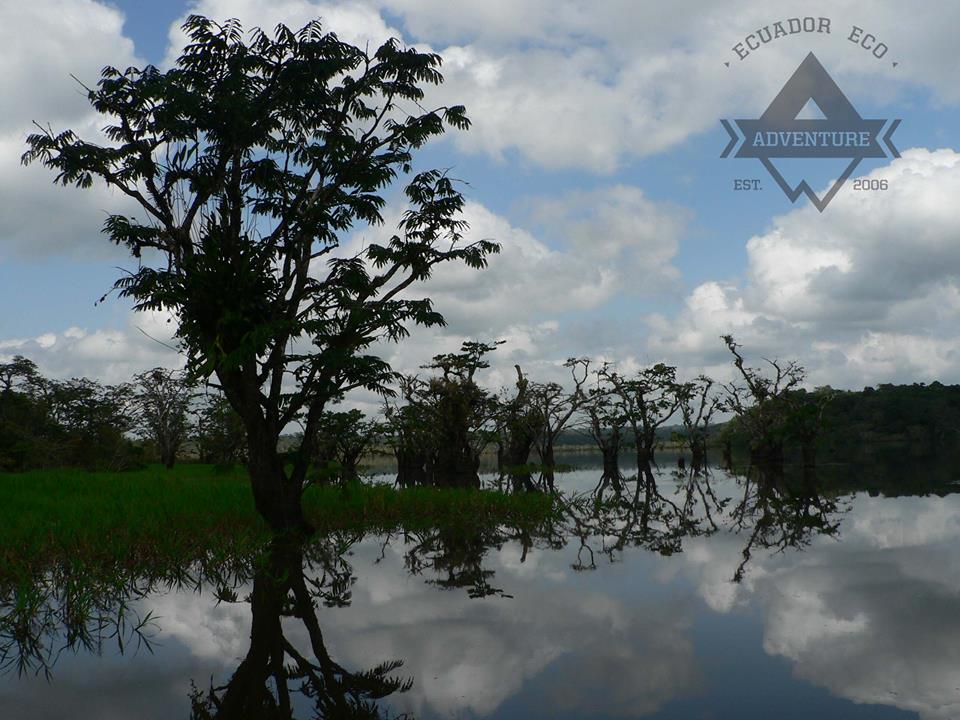
The Huaorani (also spelled Waorani) are an indigenous tribe that lives in the Amazon rainforest of Ecuador. They are known for their unique way of life, which involves living in small, semi-nomadic communities and relying on hunting and gathering for their subsistence.
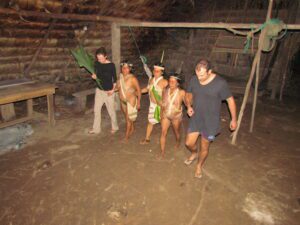
Visiting Huaorani can be a fascinating and educational experience. While staying with a Huaorani community, visitors can learn about their way of life and traditions. This may include learning about their hunting and fishing techniques, trying local foods, and participating in traditional ceremonies.
One possible experience while visiting the Huaorani might involve learning about their use of blowguns, which are traditional weapons used for hunting small game. Visitors may have the opportunity to try using a blowgun themselves and to learn about the different types of darts that are used for hunting.
Ecuador Eco Adventure is a tour operator that specializes in sustainable tourism in the Ecuadorian Amazon rainforest. The company is committed to promoting responsible tourism practices that support conservation efforts and benefit local communities.
Here are some ways that Ecuador Eco Adventure supports conservation in the Amazon Rainforest through tourism:
- Environmental Education: Ecuador Eco Adventure provides environmental education programs to tourists, educating them about the importance of conservation and sustainable development. This helps to raise awareness about the need to protect the rainforest and its biodiversity.
- Supporting Local Communities: The company works closely with local communities, including indigenous groups, to provide economic opportunities through tourism. By creating jobs and supporting local businesses, Ecuador Eco Adventure helps to reduce pressure on the rainforest from activities like logging and oil extraction.
- Sustainable Practices: Ecuador Eco Adventure operates using sustainable practices, such as using renewable energy, minimizing waste, and supporting local conservation initiatives. This helps to reduce the company’s impact on the environment and promote sustainable tourism practices.
- Conservation Projects: The company also supports conservation projects in the Amazon rainforest, such as reforestation and wildlife monitoring programs. This helps to protect the rainforest and its biodiversity for future generations.
Need to know more? send us an email with the contact form below, we will be happy to help

